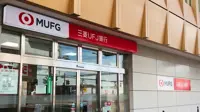Size diversity in cement nanoparticles optimizes packing density to give concrete its strength
By By Denise Brehm, civil and environmental engineeri | 29 Nov 2012
Concrete may be one of the most familiar building materials on Earth, but its underlying structure remains a bit of a mystery. Materials scientists and concrete engineers still don't fully understand exactly how the cement paste that works as glue in concrete hardens during the first hours after water and cement powder are mixed.
New technologies are making it possible for researchers in MIT's Concrete Sustainability Hub to make steady progress toward solving this mystery. First they determined that cement paste is a granular material, where the particles or basic nanoscale units pack together most densely when arranged orderly.
A few years later they discovered that the calcium-silicate-hydrate (C-S-H) molecules that make up the basic nanoscale unit of cement have a disorderly geometric arrangement, rather than the orderly crystalline structure scientists had long assumed.
Particle size implications
In new work, they found that the size of C-S-H particles themselves is also somewhat disorderly: the particles form at very diverse sizes and this diversity in the size of the nanoscale units leads to a denser, disorderly packing of the particles, which corresponds to stronger cement paste.
The researchers hope this understanding will allow materials scientists and concrete engineers to alter the C-S-H particles at the molecular level to develop stronger, more durable concrete that will have a reduced environmental footprint. If concrete is stronger, less of it is needed. And if it's more durable, structures made from it will last longer.
''While previously our models showed that the particles - think of them as homogenous sized oranges - pack together most densely when arranged orderly in a grocer's pyramid, our new work shows that when C-S-H units form in a variety of sizes, they can pack more densely when in disarray,'' says Franz-Josef Ulm, the George Macomber professor in the department of civil and environmental engineering (CEE), co-author of a paper published 12 October in Physical Review Letters. ''If you imagine a box randomly filled with many types of fruit, you can see that the berries will naturally fill the space between apples and oranges, and the apples and oranges will do the same between larger fruits.''






.webp)















